What Was It Like When The Milky Way Took Shape?

Billions of years ago, the Milky Way would have been unrecognizable. Here’s how it took its modern shape.
The Milky Way galaxy may be just one of trillions in the observable Universe, but it’s uniquely special as our cosmic home. Composed of a few hundred billion stars, about a trillion solar masses worth of dark matter, a supermassive central black hole, and a plethora of gas and dust, we’re actually somewhat typical of modern galaxies. We’re neither among the biggest or the smallest galaxies, nor are we in an ultra-massive cluster or found in isolation.
What does make us special, though, is how evolved we are. Some galaxies grow up quickly, exhausting their fuel and becoming “red and dead” when they lose the ability to form new stars. Some galaxies undergo major mergers, transforming from spirals into ellipticals when that occurs. And others experience enormous tidal disruptions, leading to sweeping, distended spiral arms. Not the Milky Way, though. We grew up exactly like you’d expect. Here’s how we got there.
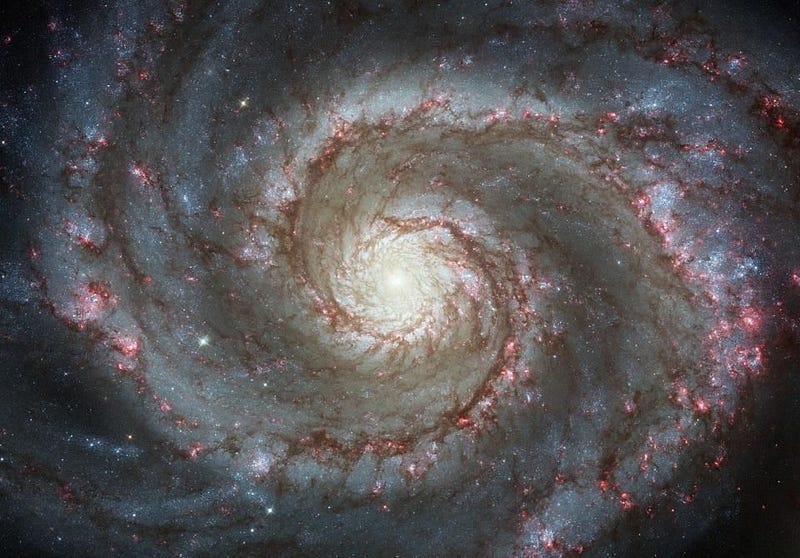
At the present time, galaxies like the Milky Way are incredibly common. Here are some properties that they typically display:
- hundreds of billions of stars,
- concentrated into a pancake-like shape,
- surrounded by globular clusters in a halo-like shape,
- containing spiral arms that extend radially outward for tens of thousands of light years,
- with a central bar-like feature emanating from a bulging region,
- a tremendous amount of gas and dust concentrated in the galactic plane,
- and young star-forming regions found where the gas and dust is densest.
Such a behemoth exerts a tremendous gravitational pull acting on everything else nearby. You can recognize a galaxy like this from afar, with the starlight streaming out of it being its characteristic giveaway. But it couldn’t have been this way forever. What we know as our Universe began with the Big Bang some 13.8 billion years ago, and galaxies couldn’t have always been this way. In fact, if we look back far enough, we can see the differences start to appear.
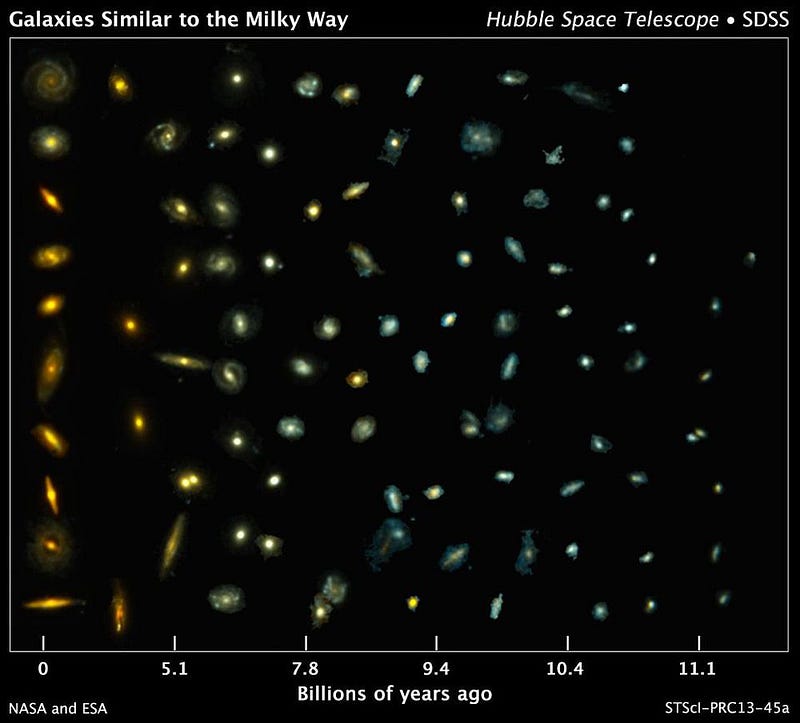
Compared to the Milky Way and other Milky Way-like galaxies that we see today, galaxies were:
- younger, as evidenced by an increase in young stars,
- bluer, since the bluest stars die the fastest,
- smaller, because galaxies merge together and attract more matter over time,
- and less spiral-like, because we are only see the brightest parts of the most active, distant, star-forming galaxies.
Our galaxy today, in other words, is the result of 13.8 billion years of cosmic evolution, where large numbers of small proto-galaxies merged together and attracted additional matter into them. We are what remains after countless other galaxies have been swallowed by our own.
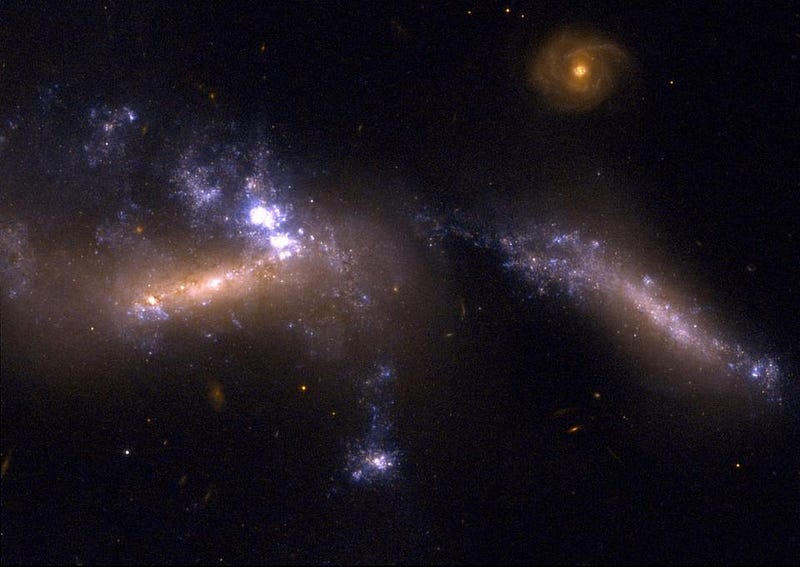
The story of how we built our Milky Way is like building a giant structure out of LEGOs. Only, instead of the LEGOs remaining the same over time, they’re actively changing form as we assemble our structure. It would be like starting with all the pieces to put together 100 different X-Wing LEGO fighters, and winding up with a Star Destroyer when we were done.
Galaxies, you see, don’t just grow by attracting other galaxies and merging together to form larger ones. Galaxies also evolve, meaning they:
- rotate,
- form stars,
- funnel matter in towards the center,
- generate density waves along their spiral arms,
- attract additional matter from outside the galaxy along cosmic filaments,
- and change shape and orientation based on the other galaxies and matter that falls into them.
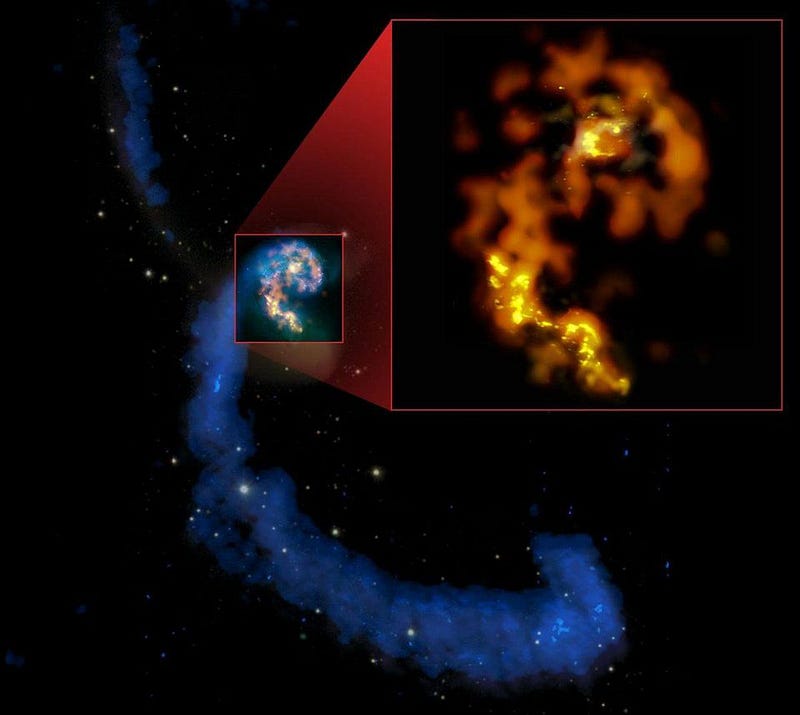
While the earliest proto-galaxies that eventually grew into the Milky Way may have formed just 200–250 million years after the Big Bang, cosmic evolution continued all throughout that time.
The first stage was forming the earliest stars and star clusters, which takes around 100 million years, and formed out of the pristine material (hydrogen and helium) left over from the Big Bang. These star clusters evolved quickly, resulting in a very rapid end-of-life for their stars. When those stars died, they polluted the interstellar medium with heavy elements that then gave rise to the second generation of stars. By time 200-to-300 million years had gone by, star clusters had merged together with one another, giving rise to the very first galaxies.
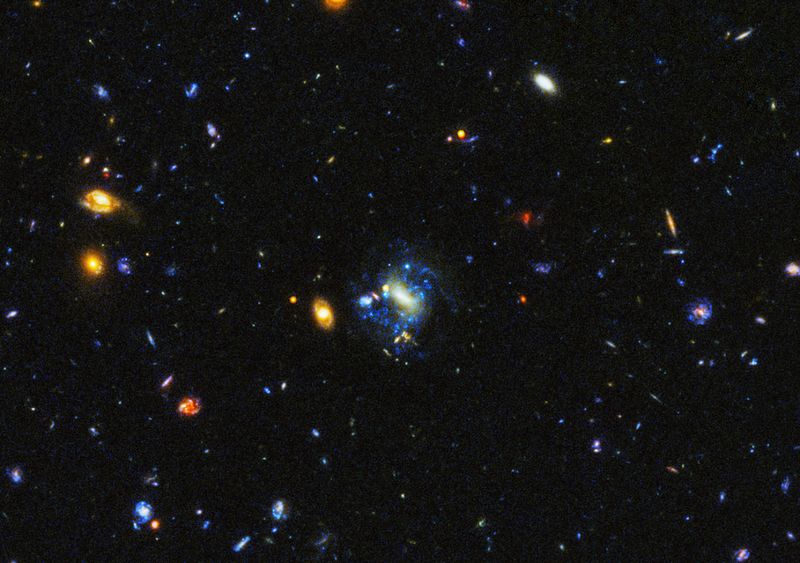
The cosmic web then begins to take shape. As more time goes by, gravitation can reach greater and greater distances, causing larger-scale clumps of matter to fall in. When a clump that’s smaller than the early galaxy falls it, it gets tidally torn apart and funneled into the galaxy’s interior gently and slowly, where it can simply be absorbed over time.
These minor mergers are common, and anything up to about a third the mass of the total galaxy falls into this category. Any internal structures, such as spiral arms, star-forming regions, a bar, or a bulge should all remain intact. Meanwhile, the additional gas and dust provides new fuel for new generations of stars. Star formation usually intensifies during merger events, even minor ones. For the first 2 or 3 billion years, this process was common.
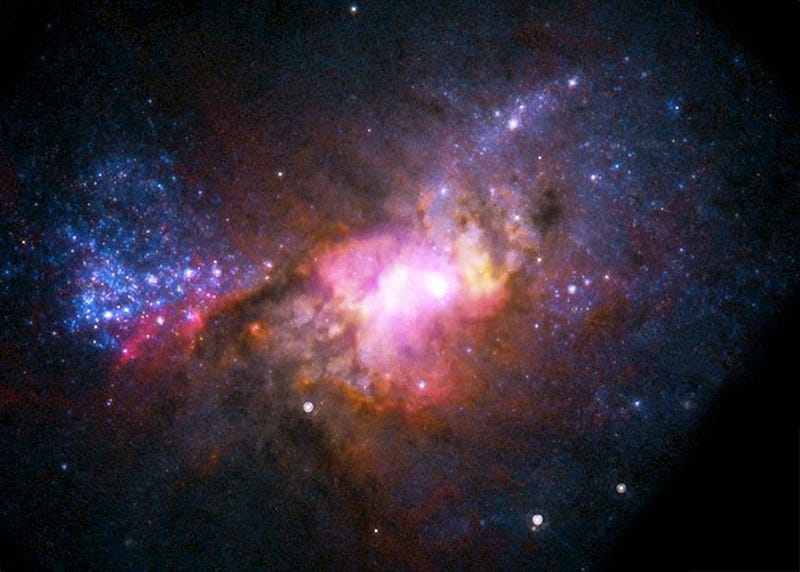
But as time goes on and the Universe expands, mergers become, on average, less common but more major. Galaxies clump and cluster together into groups of many different sizes, but occasionally can form large galaxy clusters with hundreds or even thousands of times the mass of our own Local Group. These dense galaxy clusters are some of the most spectacular sights in the Universe, but they’re also relatively rare: the majority of mass and the majority of galaxies are found in small groups like our own, not in the massive clusters that we see so prevalently in our Universe. By the time 4 or 5 billion years had gone by, it became clear we’d never become part of a massive cluster.
It’s important that we keep these mergers small, though. If we experience a major one, where two similarly-sized galaxies collide, they can induce an enormous burst of star formation, which can use up all the available star-forming gas and “mix up” the matter in the galaxy.
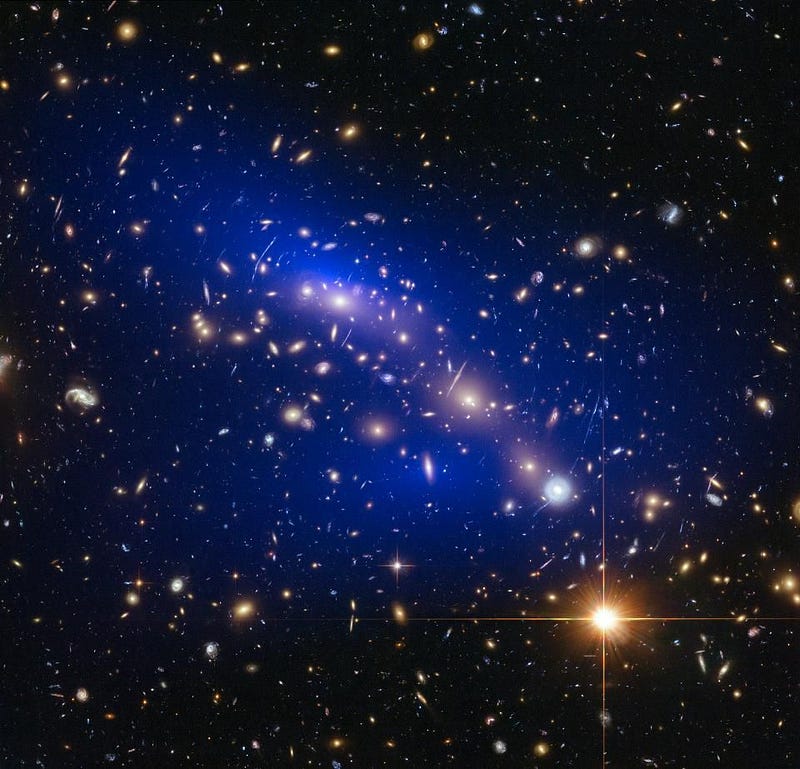
This typically results in the creation of a giant elliptical galaxy: one that forms stars all-at-once in tremendous numbers, and then never again. This is the end-stage of galaxy evolution for most galaxies, but it relies on multiple large galaxies smashing together. This realization helps explain why giant ellipticals are common inside massive galaxy clusters, but much rarer in groups or in isolation.
It takes a lot of mass, built up over time, to create a major merger. So long as a galaxy is massive enough (as in Milky-Way sized or comparable), there is available material to form new stars (gas). So long as galaxies have angular momentum and a preferred rotation axis (which they do in the absence of a major merger), and so long as they have enough time to settle down into a stable shape (which they all have, unless there’s been a recent major merger), we expect them to have a spiral shape.
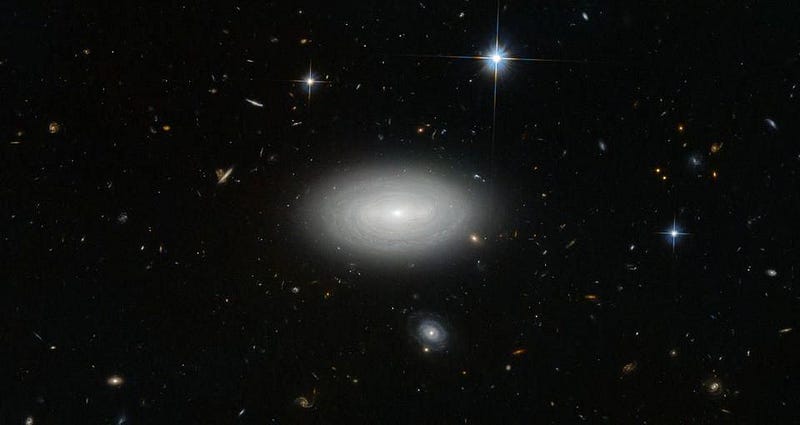
Our Milky Way likely grew from a series of proto-galaxies that settled down into a spiral shape, then gradually gobbled up many of the smaller galaxies present in the Local Group. We didn’t even gather the majority of them; that honor goes to our neighbor, Andromeda. Nor are we done: there are satellite galaxies merging with us today, and a few galaxies on our outskirts, like the two Magellanic Clouds, that will likely be devoured in the next few hundred million years or so.
The cosmic story that brought the Milky Way to be is one of survival of the largest. When it comes to dominating the galaxy, mass is the overwhelming factor.
As time went on, this flat, disk-like shape began to wind up. Our spiral arms became more pronounced and developed more turns in them. Spurs came off of the arms, and gravitational interactions led to us forming stars along the tail ends of our galaxy. Additional gas flowed into the outskirts, eventually getting funneled to the center.
As galaxies continue to evolve, they also develop features we might recognize. A central bulge forms in the densest region of matter. There are pathways that are more successful at driving matter into the core: a central bar develops and grows. The dynamics of gas and stars causes the galaxy to become an even thinner disk, and to spread out towards the edges, increasing in radius but decreasing in thickness.
And finally, as gravity does the inevitable, all the galaxies bound together will eventually merge. The Milky Way itself is destined, approximately 4 billion years from now, for a merger with Andromeda.
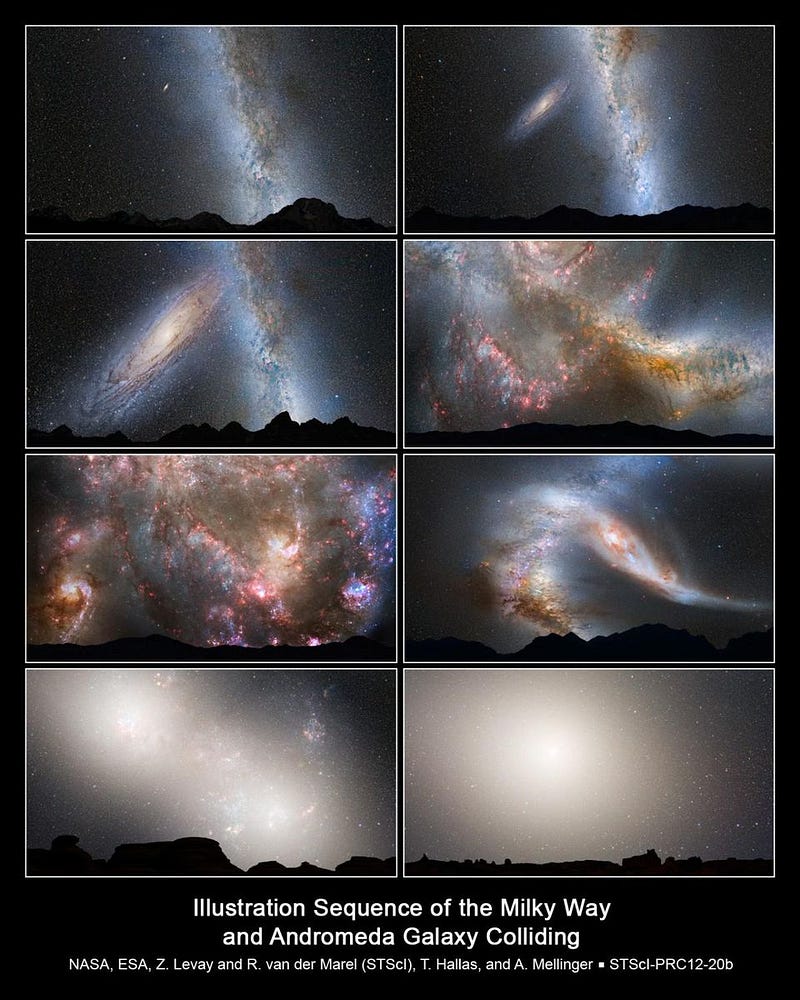
The cosmic story that led to the Milky Way is one of constant evolution. We likely formed from hundreds or even thousands of smaller, early-stage galaxies that merged together. The spiral arms likely formed and were destroyed many times by interactions, only to re-form from the rotating, gas-rich nature of an evolving galaxy. Star formation occurred inside in waves, often triggered by minor mergers or gravitational interactions. And these waves of star-formation brought along increases in supernova rates and heavy metal enrichment. (Which sounds like everyone’s favorite after-school activity.)
These continuous changes are still occurring, and will come to a conclusion billions of years in the future, when all the galaxies of the Local Group have merged together. Every single galaxy has its own unique cosmic story, and the Milky Way is just one typical example. As grown up as we are, we’re still evolving.
Further reading on what the Universe was like when:
- What was it like when the Universe was inflating?
- What was it like when the Big Bang first began?
- What was it like when the Universe was at its hottest?
- What was it like when the Universe first created more matter than antimatter?
- What was it like when the Higgs gave mass to the Universe?
- What was it like when we first made protons and neutrons?
- What was it like when we lost the last of our antimatter?
- What was it like when the Universe made its first elements?
- What was it like when the Universe first made atoms?
- What was it like when there were no stars in the Universe?
- What was it like when the first stars began illuminating the Universe?
- What was it like when the first stars died?
- What was it like when the Universe made its second generation of stars?
- What was it like when the Universe made the very first galaxies?
- What was it like when starlight first broke through the Universe’s neutral atoms?
- What was it like when the first supermassive black holes formed?
- What was it like when life in the Universe first became possible?
- What was it like when galaxies formed the greatest numbers of stars?
- What was it like when the first habitable planets formed?
- What was it like when the cosmic web took shape?





